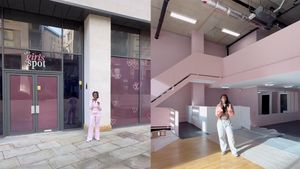A field of native California plants rolls across a plain of undulating hills -- hovering high above the ground in San Francisco's Golden Gate Park. Supported largely by glass walls, the green roof is only the most surprising of the many striking features of internationally renowned architect Renzo Piano's new building for the venerable California Academy of Sciences.
The CAS, which houses research and educational facilities and a vast collection of scientific specimens as well as the Kimball Natural History Museum, the Steinhart Aquarium, and the Morrison Planetarium, formerly comprised 13 structures built in Golden Gate Park over the course of the 20th century. The park location was chosen after the academy, founded in 1853, lost its stately 1891 Market Street building and most of its collection to San Francisco's devastating 1906 earthquake and subsequent fires.
Yet another new home became necessary after structural damage from the Bay Area's 1989 Loma Prieta earthquake eventually closed the old museum in 2003, presenting an opportunity to reinvent the CAS in a totally new, unified, and visionary structure. The academy selected Pritzker Prize-winning architect Piano, designer of the revolutionary Centre Georges Pompidou in Paris (with Richard Rogers) as well as numerous other museums, to create a structure that is not only an artistic landmark but also reflects and reinforces the mission of the CAS to "explore, explain, and protect the natural world," according to executive director Gregory C. Farrington. The result is not just visually striking -- it is also the world's greenest museum. The academy has earned a "platinum" rating for Leadership in Energy and Environmental Design (LEED), making it the largest sustainable public building in the world, incorporating, among other features, solar energy panels and a passive cooling system.
"This museum has always worked on three levels -- displaying the collection, educating the public, researching the science. The spirit of this new building is to announce and enforce this complexity of function," Piano explains.
The main floor, an enormous rectangle of glass and limestone, houses the Morrison Planetarium in a giant opaque sphere on one side, with a four-story rain forest in a sealed transparent dome on the other. Several sections of the original buildings have been incorporated into the redesigned museum, creating a beautiful contrast between old and new. The neoclassical African Hall, with its taxidermy dioramas, has been preserved. The main window now contains the Steinhart Aquarium's live South African penguins, swimming and waddling in startling contrast to the stuffed creatures. Other parts of the original structure have been preserved to great effect as well, including the 1934 entry colonnade, the Foucault pendulum, and the playful brass seahorse railings of the original aquarium building.
The aquarium itself now occupies the entire basement of the new facility -- an underground, underwater fantasia of 38,000 living creatures. Twenty-five feet deep and holding 212,000 gallons of water, the Philippine Coral Reef tank is one of the deepest exhibits of live corals in the world; while the 100,000-gallon Northern California Coast tank highlights local sea life. Other exhibits include a walkway beneath a glass-bottomed Amazon lake, tanks of delicate jellyfish, a hands-on tide pool, and a swamp housing the aquarium's famous decades-old albino alligator. The rooftop viewing platform provides a close-up look at the amazing living roof.
Finally, the building, located at 55 Music Concourse Dr., also includes the Moss Room, a gourmet eatery open for lunch and dinner, offering organic local produce, seafood, and meat raised in a sustainable manner -- extending the academy's mission of protecting the natural world right to its restaurant.



















































































